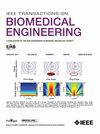推进肌电假体:镀金3d打印热塑性干电极的功效。
IF 4.5
2区 医学
Q2 ENGINEERING, BIOMEDICAL
引用次数: 0
摘要
在辅助技术的不断发展中,智能肌电假肢的功能正在取得重大进展,使其成为截肢者和先天性肢体差异者的合法选择。与此同时,3D打印正在从其作为原型工具的传统角色转变为一种可行的、具有成本效益的制造方法。在这种背景下,评估3D打印在制造复杂部件(如电极)方面的能力变得可行,这对这些假肢的有效操作至关重要。本研究通过生产和评估三种石墨掺杂热塑性电极的变体,随后用一层镀金增强,探索了3d打印电极的功效。这些创新电极与五种传统的肌电(EMG)电极进行基准比较,以比较它们的性能和特征。10名参与者的测试显示,三种热塑性材料中的两种,PLA和TPU,显示出肌电图应用的真正潜力。值得注意的是,在这些热塑性塑料上镀金显著提高了信号质量,在某些情况下达到了与传统金属电极相当的性能。这项研究强调了掺杂热塑性3d打印电极在医疗应用中的前景。通过生产结合导电芯和绝缘外壳的电极,该技术为创造高度复杂的电极设计铺平了道路。此外,通过3D打印快速原型和迭代设计的能力将彻底改变电极阵列的发展,为假肢技术及其他领域的创新提供新的途径。本文章由计算机程序翻译,如有差异,请以英文原文为准。
Advancing Myoelectric Prostheses: Efficacy of Gold-Plated 3D-Printed Thermoplastic Dry Electrodes
In the evolving landscape of assistive technologies, significant advancements are being made in the functionality of intelligent myoelectric prostheses, positioning them as a legitimate option for amputees and persons with congenital limb differences. Concurrently, 3D printing is transitioning from its traditional role as a prototyping tool to a viable, cost-effective method for manufacturing. Against this backdrop, it becomes feasible to assess the capabilities of 3D printing in fabricating intricate components, such as electrodes, which are critical for the effective operation of these prostheses. This study explores the efficacy of 3D-printed electrodes by producing and evaluating three variants of graphite-doped thermoplastic electrodes, subsequently enhanced with a layer of gold-plating. These innovative electrodes were benchmarked against five conventional electromyography (EMG) electrodes to compare their performance and characteristics. Testing with ten participants revealed that two of the three thermoplastic materials examined, PLA and TPU, exhibited real potential for electromyography applications. Notably, the application of gold-plating to these thermoplastics significantly enhanced signal quality, achieving parity with the performance of traditional metal electrodes in certain cases. This investigation underscores the promising future of doped thermoplastic 3D-printed electrodes in medical applications. By enabling the production of electrodes that combine a conductive core with an insulating exterior, this technology paves the way for the creation of highly complex electrode designs. Moreover, the ability to rapidly prototype and iterate designs through 3D printing is set to revolutionize the development of electrode arrays, offering new avenues for innovation in prosthetic technology and beyond.
求助全文
通过发布文献求助,成功后即可免费获取论文全文。
去求助
来源期刊

IEEE Transactions on Biomedical Engineering
工程技术-工程:生物医学
CiteScore
9.40
自引率
4.30%
发文量
880
审稿时长
2.5 months
期刊介绍:
IEEE Transactions on Biomedical Engineering contains basic and applied papers dealing with biomedical engineering. Papers range from engineering development in methods and techniques with biomedical applications to experimental and clinical investigations with engineering contributions.
 求助内容:
求助内容: 应助结果提醒方式:
应助结果提醒方式:


